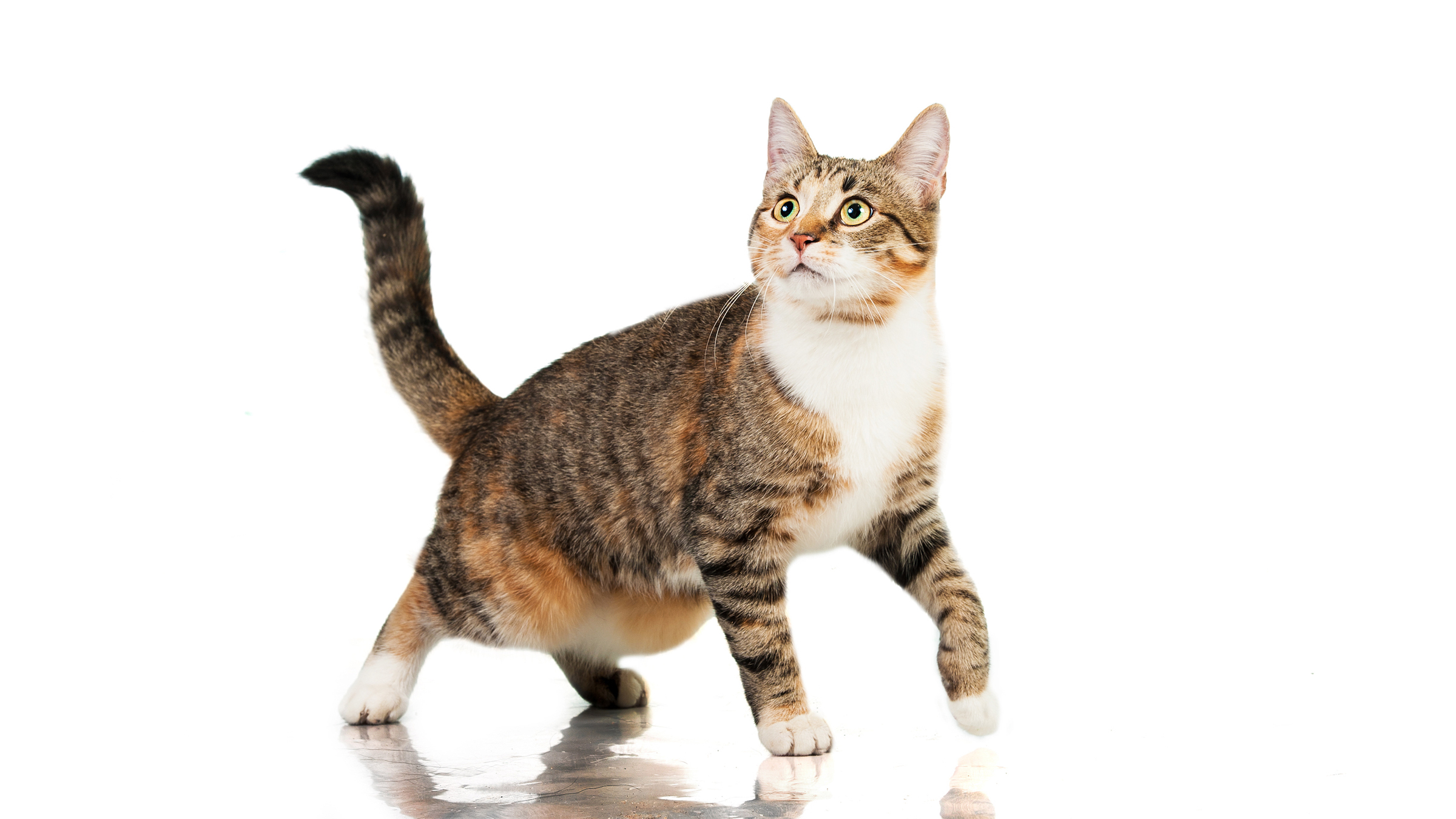
Why do cats have belly 'pouches'?
There are three possible explanations.

Fat cats are cute, but not every cat that looks like it has a big belly is overweight. Although the part of a cat's underside that swings when it walks may look like a paunch, it's actually not a tummy at all. So what is it?
That bit of skin, fur and fat is a protective layer called the primordial pouch. It's positioned along the length of a cat's belly. These pouches are perfectly normal and healthy, said José Arce, president-elect of the American Veterinary Medical Association. All cats have primordial pouches, but they vary greatly in size; some are almost undetectable. It's easiest to see a small pouch when it flops back and forth as a cat runs.
There are three main theories as to why cats have primordial pouches, Arce told Live Science. The first is that it protects the internal organs in a fight by adding an extra layer between claws or teeth and the feline's insides.
Related: Why do cats meow?
A second theory is that the pouch allows cats to move faster. It stretches as the felines run, giving them extra flexibility and the ability to go farther with each bound — qualities that can help them evade predators or catch prey.
Another possibility is that the pouch is an extra space for storing food after a big meal. In the wild, cats don't get two square meals a day; they eat when they can and may store fat from a large kill in their pouch for sustenance days later.
Primordial pouches aren't unique to domestic cats. Big cats, such as lions and tigers, have them for the same reasons, Arce noted. In house cats, the pouch starts to develop around 6 months of age in both males and females.
Sign up for the Live Science daily newsletter now
Get the world’s most fascinating discoveries delivered straight to your inbox.
It's important to be able to tell whether your cat has a large primordial pouch or is overweight. Just like in people, obesity can lead to heart problems, diabetes and hypertension, Arce said. Being overweight can also increase cats' risk of arthritis and some types of cancer, he added.
One way to differentiate between the two is the cat's shape, Arce said. Obese cats have rounder bodies than healthy-weight cats with large pouches. If you're standing above the cat, you should be able to see an indentation at the hips, which is the cat's waist. The belly of an obese cat comes from the top of the underside and continues all the way down, but primordial pouches start farther down and are skewed toward the back legs. Another way to tell is that if you have to press hard to feel your cat's ribs, your pet is probably overweight. Finally, bellies don't swing the way pouches do when cats walk or run.
If you suspect that your cat is overweight, ask your veterinarian. They may suggest feeding your feline a low-fat, high-fiber diet, Arce said. To keep your cat healthy, make sure it hits the recommended target of 15 minutes of exercise per day by encouraging it to play with toys. If your cat isn't used to exercising, start slowly. If it's panting, it's probably overexerting itself.
Originally published on Live Science.

Tyler Santora is a freelance science and health journalist based out of Colorado. They write for publications such as Scientific American, Nature Medicine, Medscape, Undark, Popular Science, Audubon magazine, and many more. Previously, Tyler was the health and science Editor for Fatherly. They graduated from Oberlin College with a bachelor's degree in biology and New York University with a master's in science journalism.









